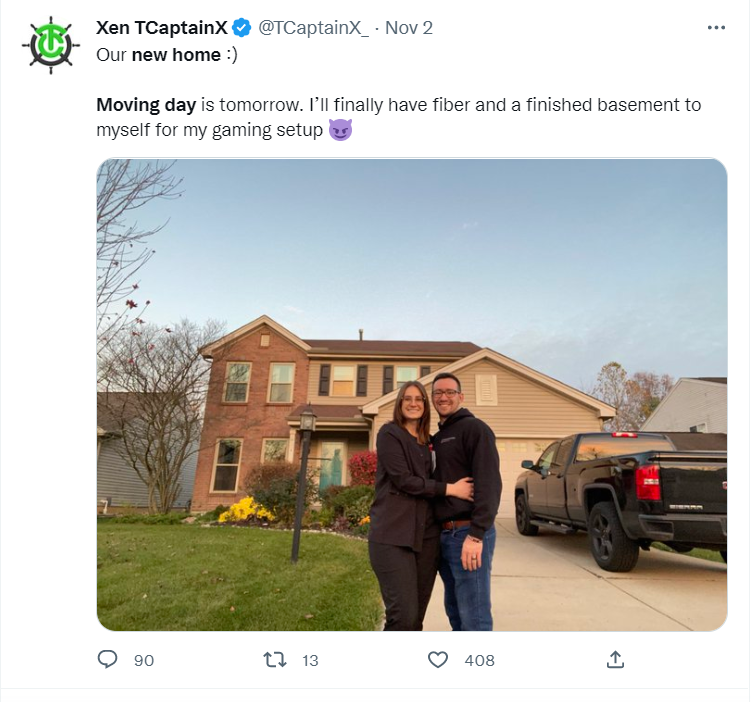See whether or not you can afford your dream home using our free home affordability calculator

Calculating your home affordability is a critical step in applying for a mortgage and landing that dream home. While there are many expenses to consider, there are easy ways to determine how much money you should spend on your home each month and how much may lead you to becoming “house poor.”
As we will see, the 28/36 rule is a general rule—but it’s not the only rule of home affordability calculations.
Here is everything you need to know about home affordability, including a free home affordability calculator, from how to calculate affordability based on your monthly expenses to the meaning of house poor to strategies you can use to lower your mortgage payments. For our usual readers of mortgage professionals, this is an excellent article to pass along to your clients to help them better understand what they can afford.
How do you calculate home affordability?
When you are calculating home affordability, there are many factors that you need to consider. Some of these factors include:
- Gross annual income
- Down payment
- Location of your home
- Living costs of your home
- Debt payments
Calculating an estimate of the home loan you may qualify for is a critical step in determining your budget. You will also need to determine if you have enough cash resources to buy a property, which includes making a down payment and covering closing costs. When you have a better understanding of the various factors, you will have a good idea of the type of home you should be searching for.
Here is a checklist which will help you break down your own financial situation:
- Income: How much money you earn each month from your job(s). Have your net income and your gross income on hand. These are found on your most recent pay stubs. If you are a freelancer, use your more recent tax return as a guide.
- Debt: What you currently owe money on, including student loans, car payments, credit cards, and any other form of debt. It may be a good idea to pay down debts prior to applying for a mortgage—especially high-interest debts.
- Down payment: How much money you will pay upfront for the cost of a property. The more money you spend on a down payment, the lower your monthly mortgage payment will be. A 20% down payment will also usually remove the need for private mortgage insurance (PMI).
- Credit score: You will give yourself a better chance to get a lower interest rate if you have good or excellent credit. Higher interest rates usually mean higher monthly payments.
Now that you have a better idea of your expenses each month, you should have an easier time calculating your home affordability.
Free home affordability calculator
To help make it easier for you to calculate your home affordability, you can use this free home affordability calculator:
This home affordability calculator will help you not only determine your home affordability but shows which expenses you will need to keep in mind when budgeting your mortgage payments.
What percentage of my income should I spend on my mortgage?
Generally, the percentage of income that you should spend on your mortgage is 28% of your gross household income. However, there are various rules and guidelines that could help you calculate home affordability. In other words, there is no one-size-fits all answer.
There are also a few different rules, I.e., ways of viewing it. Here are different percentages of income that can be spent on mortgages:
- 28%/36% rule
- 35%/45% rule
- 25% rule
Each of these rules provides you with a different way of figuring out how much home you can afford and should be used in conjunction with the home affordability calculator above. Let’s break down what each of these percentages means:
1. 28%/36% rule
When we say the 28%/36% rule, we mean you should avoid spending more than 28% of your monthly income and 36% of your debt on mortgage payments.
To arrive at these percentages, we are basing it on two calculations: the front-end ratio and the back-end ratio. First, let’s look at the difference between the front-end ratio and the back-end ratio.
The front-end ratio—which is also called the mortgage-to-income ratio—is the percentage of your monthly gross income that you spend on mortgage costs. The formula to determine your front-end ratio looks like this:
Monthly mortgage payment ÷ gross monthly income = front-end ratio
The back-end ratio, on the other hand, takes all debt payments into account. This is otherwise known as the debt-to-income ratio, or DTI. Your DTI is the percentage of your gross monthly income that you spend on debt payments, such as car loans, student loans, personal loans, etc. The formula to determine your back-end ratio looks like this:
Total debt costs ÷ gross monthly income = back-end ratio
Lenders use those ratios to determine how much you can afford to borrow.

As mentioned, the 28 in the 28%/36% rule means that no more than 28% of your gross monthly income should go toward housing costs. The 36 in that rule states that no more than 36% of your gross monthly income should go toward total debt costs.
If you want to calculate how much you can afford to spend, you can multiply your gross monthly income by 0.28. For instance, you should spend $2,240 maximum on a monthly mortgage payment if you have a gross monthly income of $8,000. The formula looks like this:
Gross monthly income ($8,000) x 28% (0.28) = Maximum monthly mortgage payment ($2,240)
35%/45% rule
This rule suggests that your total monthly debt should not exceed more than 35% of your income before taxes and should not exceed 45% of your income after taxes. To determine the 35%, you need to multiply your gross monthly income by 0.35. To determine the 45%, you need to multiply your monthly income after taxes by 0.45.
25% rule
This rule states that no more than 25% of your income after taxes should be spent on housing costs. Because this rule allows you to use your net income in calculations, it is usually easiest if you are not sure about your gross monthly income. To calculate the 25% rule, you can multiply your monthly post-tax income by 0.25.
What is considered house poor?
The term house poor means that a homeowner spends a significant portion of their total income—or too much—on homeownership. Some of those expenses include property taxes, mortgage payments, utilities, and maintenance. Being house poor could also put the homeowner in danger of missing other financial obligations, such as car payments, for instance.
There are several reasons why a homeowner would find themselves being house poor, including underestimating their total costs or losing income.
However, there are also ways to prevent becoming house poor, including:
- Estimate how much to spend
- Calculate your expenses
- Choose the right mortgage
- Save, save, save
Each one of these is basically all about doing your homework first, making sure you use a home affordability calculator, and then doing all of it all over again. This is a huge financial decision, and you need to be more prepared than you have ever been prepared before. Here is a closer look at each of the ways to prevent becoming house poor:
Estimate how much to spend
While some experts say this figure may have to be considerably higher, a good estimation of how much to spend on a property is that it is 2.5 times your total gross annual salary. This estimate both considers that you may earn more money in the future and that you may find yourself without a job as well.
Calculate your expenses
Your expenses, in this context, include the amount you spend on a down payment, your mortgage interest rate, and your property taxes, among others. To be more exact, you can determine how much you should spend by calculating the percentage of your monthly gross income that you will spend on housing costs. Another term for this is debt-to-income ratio (DTI), which, as mentioned, should not exceed 28%.
Choose the right mortgage
It is important to choose the right mortgage for you and your financial situation. Opting for a fixed interest rate mortgage, for example, will ensure that you avoid unexpected payment increases.
Save, save, save
Saving money for a rainy-day fund will help you to avoid becoming house poor. Set that extra money aside for unforeseen circumstances, like sudden changes in your financial situation or maintenance costs.

How to lower your monthly mortgage payments?
After using our free home affordability calculator and working through the rules above, you might conclude that you are unable to afford the monthly mortgage payments for your dream home. But do not worry—just because you cannot control your income, it does not mean that you have to give up on your dream just yet.
Here are some strategies to lower your monthly mortgage payments, which could help you move into that dream home sooner than you think:
- Improve your credit score
- Boost your down payment
- Change your loan term
- Shop for a more affordable home
Let’s take a closer look at each:
1: Improve your credit score
You will usually secure more favorable loan terms if you have a higher credit score. Those favorable loan terms include lower interest rates, for example. Therefore, improving your credit score prior to applying for a mortgage is the best approach. One easy way to improve your credit score is to promptly pay your bills as well as any extra debt. Crucially, this will improve your debt-to-income ratio, or DTI.
2: Boost your down payment
Your monthly mortgage payments will be lowered if you make a higher down payment, which means it may be a good idea to take more time to save for upfront expenses. Making a larger down payment of, say, 20% is also a good way to avoid paying mortgage insurance.
Read more: Average down payment on a house: Everything you need to know
3: Change your loaAverage down payment on a house: Everything you need to known term
You can also extend your loan term, which can be a good option. If you make your loan term longer, you are spreading the principal balance across an extended period. This will, in turn, make monthly payments more inexpensive, although it may also mean paying more interest over the life of the loan. It is important, if you change your loan term, what that means for the short and long term.
4: Shop for a more affordable home
This may not be the ideal solution to get you into that dream home you wanted, but it is a highly practical solution. Even if your lender approves you for a home loan of a certain amount, it doesn’t necessarily mean you have to purchase a property for the full amount. Remember: your monthly payments will be lower if the home price is lower. And those extra funds may come in handy someday.
Using a home affordability calculator and buying a home
Remember: There is no one-size-fits-all answer to how much home you can afford. The first step is to know your debts and monthly expenses so that you can better calculate home affordability, and then use our free home affordability calculator. If you start there, you will be able to better determine the size of the loan—and home—you can afford. And you will be moving in in no time.
Have you used a home affordability calculator, or any of the other calculations listed here, to determine if you could afford your home? Tell us about your experiences in the comments section below.



